#quality sensor
Explore tagged Tumblr posts
Text
I'm going to do a very small shop drop this Saturday, September 28, adding 2 bunnies, 2 frogs, and a couple other creatures. The shop is closed until then so that I can add the creatures one by one :]
I'll open the shop again at 2:00 Central Time!
#I have about a hundred other sculptures waiting to be glazed but unfortunately it's taking a long time for our kiln shelf situation—#—to get sorted out. so in the meantime I'm putting the few surviving sculptures of the last firing up :]#they are of varying quality due to the kiln temperature sensor burning out and over-firing them (it was sad)#but anyway some of them are discounted! because of slight blemishes and miscolorations#shop update#not ceramics
23 notes
·
View notes
Text

Trying out my old point and shoot camera again
#y2k#y2k aesthetic#journal#travelers notebook#journaling#I’ve heard these are supposed to give a film-like quality because of the sensors#we’ll see#it might be too new to really give that effect but it does have CCD photodetectors
25 notes
·
View notes
Text
Researchers have developed a sensor made from "frozen smoke" that uses artificial intelligence techniques to detect formaldehyde in real time at concentrations as low as eight parts per billion, far beyond the sensitivity of most indoor air quality sensors. The researchers, from the University of Cambridge, developed sensors made from highly porous materials known as aerogels. By precisely engineering the shape of the holes in the aerogels, the sensors were able to detect the fingerprint of formaldehyde, a common indoor air pollutant, at room temperature.
Continue Reading.
47 notes
·
View notes
Text
Has anyone talked about how the person who kept Blitz and Fizzarolli apart is probably the same person who programmed the fizz bot with a kill boner for Blitz at loo loo land. (Because why tf would an entertainment robot be able to pop shit like that)
#let alone have a sensor SPECIFICALLY for Blitz#i need a quality deep dive rn#sorry im hyperfixating#helluva boss#helluva boss blitzo#blitzø#fizzarolli#helluva boss theory#chaos shit#with love my loves
57 notes
·
View notes
Text
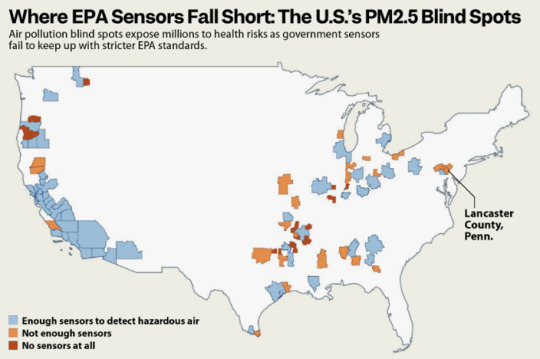
Excerpt from this story from Inside Climate News:
and they have become part of his morning routine: a shot of hot coffee in his favorite white mug, his seat by the sunlit kitchen window and some quick research on his phone that will decide if he can go out that day.
“I wish I wouldn’t have to do it. But for me, unfortunately, when the air is bad, my throat goes tight. My eyes water. Suzy gets headaches,” Haldeman said, referring to his wife, Suzy Hamme.
Retired and in their 70s, Haldeman and Hamme can’t afford to take chances. They’re both sensitive to pollution and doctors recently found a lump in Haldeman’s right lung that restricts his breathing.
Haldeman’s apps include the EPA’s own AirNow, as well as the independently run Purple Air, which collects data from low-cost sensors purchased and installed by users of the app, one of which is hanging by the shed in their backyard in Lancaster County, Pennsylvania.
“The federal one, the AirNow app, is never as precise as our Purple Air monitor here,” Haldeman said, noting that AirNow frequently underreports the pollution in their area. “I think it’s because, on their own, they have so few testing stations and the one that’s closest to us is 10 miles away.”
Haldeman’s hunch aligns with a troubling reality. According to new research from the University of California, Berkeley, more than 20 million people live in urban neighborhoods across the U.S. that are air-quality “blind spots”—areas experiencing dangerous levels of soot pollution subject to the government’s standard but don’t have enough government sensors to flag it.
These blind spots comprise 44 percent of all urban areas in the U.S. that are projected to have hazardous air pollution.
“There are around 1,000 regulatory monitors in the U.S., but it’s far from enough,” said Yuzhou Wang, a postdoctoral fellow in environmental engineering at Berkeley and the chief author of the new assessment. Wang, who grew up experiencing thick smog in China, mapped the blind spots with the help of data from satellites, including traffic corridors and locations of pollution sources like factories.
4 notes
·
View notes
Text

On my way to work the other day.
#liminal#low quality#digicam#dreamlike#dream#olympusphotography#2000s#rainyday#tennessee#forests#road photography#ccd sensor#art#rural aesthetic#eerie
17 notes
·
View notes
Text
Medium voltage support insulator manufacturers in India | radiantenterprises
Elevate your electrical solutions with Radiant Enterprises, a top name among customised insulator manufacturers in India. Specializing in high-quality epoxy insulators, we cater to the specific needs of your projects with precision and expertise. As leading medium voltage support insulator manufacturers in India, we provide durable and reliable products that meet the highest industry standards.
Trust Radiant Enterprises for innovative and customized insulator solutions designed to enhance the performance and safety of your electrical systems.
#Epoxy insulator#Customised insulator manufacturers in India#Medium voltage support insulator manufacturers in India#epoxy bushing#epoxy insulator#epoxy resin#electrical company#electrical engineering#electrical industry#fuse cutouts#smart grid sensor#rail insulator#railway technology companies#train operating companies#locomotive#tramways#metro systems#traffic infrastructure#third rail#cable connector#innovative insulators#export quality
4 notes
·
View notes
Text
Thousands of dollars. A literal piece of shit.
#How is the adhesive to expensive ass medical equipment such fucking ass.#It's like there is no quality control#I still have 5 days left for this sensor and it is literally about to fall off of me#Count your fucking days dexcom cause if this shit falls off I have nothing for the rest of this week and some of next week
2 notes
·
View notes
Text
The AIoT Revolution: How AI and IoT Convergence is Rewriting the Rules of Industry & Life

Imagine a world where factory machines predict their own breakdowns before they happen. Where city streets dynamically adjust traffic flow in real-time, slashing commute times. Where your morning coffee brews automatically as your smartwatch detects you waking. This isn’t science fiction—it’s the explosive reality of Artificial Intelligence of Things (AIoT), the merger of AI algorithms and IoT ecosystems. At widedevsolution.com, we engineer these intelligent futures daily.
Why AIoT Isn’t Just Buzzword Bingo: The Core Convergence
Artificial Intelligence of Things fuses the sensory nervous system of IoT devices (sensors, actuators, smart gadgets) with the cognitive brainpower of machine learning models and deep neural networks. Unlike traditional IoT—which drowns in raw data—AIoT delivers actionable intelligence.
As Sundar Pichai, CEO of Google, asserts:
“We are moving from a mobile-first to an AI-first world. The ability to apply AI and machine learning to massive datasets from connected devices is unlocking unprecedented solutions.”
The AIoT Trinity: Trends Reshaping Reality
1. Predictive Maintenance: The Death of Downtime Gone are days of scheduled check-ups. AI-driven predictive maintenance analyzes sensor data intelligence—vibrations, temperature, sound patterns—to forecast failures weeks in advance.
Real-world impact: Siemens reduced turbine failures by 30% using AI anomaly detection on industrial IoT applications.
Financial upside: McKinsey estimates predictive maintenance cuts costs by 20% and downtime by 50%.
2. Smart Cities: Urban Landscapes with a Brain Smart city solutions leverage edge computing and real-time analytics to optimize resources. Barcelona’s AIoT-powered streetlights cut energy use by 30%. Singapore uses AI traffic prediction to reduce congestion by 15%.
Core Tech Stack:
Distributed sensor networks monitoring air/water quality
Computer vision systems for public safety
AI-powered energy grids balancing supply/demand
3. Hyper-Personalized Experiences: The End of One-Size-Fits-All Personalized user experiences now anticipate needs. Think:
Retail: Nike’s IoT-enabled stores suggest shoes based on past purchases and gait analysis.
Healthcare: Remote patient monitoring with wearable IoT detects arrhythmias before symptoms appear.
Sectoral Shockwaves: Where AIoT is Moving the Needle
🏥 Healthcare: From Treatment to Prevention Healthcare IoT enables continuous monitoring. AI-driven diagnostics analyze data from pacemakers, glucose monitors, and smart inhalers. Results?
45% fewer hospital readmissions (Mayo Clinic study)
Early detection of sepsis 6+ hours faster (Johns Hopkins AIoT model)
🌾 Agriculture: Precision Farming at Scale Precision agriculture uses soil moisture sensors, drone imagery, and ML yield prediction to boost output sustainably.
Case Study: John Deere’s AIoT tractors reduced water usage by 40% while increasing crop yields by 15% via real-time field analytics.
🏭 Manufacturing: The Zero-Waste Factory Manufacturing efficiency soars with AI-powered quality control and autonomous supply chains.
Data Point: Bosch’s AIoT factories achieve 99.9985% quality compliance and 25% faster production cycles through automated defect detection.
Navigating the Minefield: Challenges in Scaling AIoT
Even pioneers face hurdles:ChallengeSolutionData security in IoTEnd-to-end encryption + zero-trust architectureSystem interoperabilityAPI-first integration frameworksAI model driftContinuous MLOps monitoringEnergy constraintsTinyML algorithms for low-power devices
As Microsoft CEO Satya Nadella warns:
“Trust is the currency of the AIoT era. Without robust security and ethical governance, even the most brilliant systems will fail.”
How widedevsolution.com Engineers Tomorrow’s AIoT
At widedevsolution.com, we build scalable IoT systems that turn data deluge into profit. Our recent projects include:
A predictive maintenance platform for wind farms, cutting turbine repair costs by $2M/year.
An AI retail personalization engine boosting client sales conversions by 34%.
Smart city infrastructure reducing municipal energy waste by 28%.
We specialize in overcoming edge computing bottlenecks and designing cyber-physical systems with military-grade data security in IoT.
The Road Ahead: Your AIoT Action Plan
The AIoT market will hit $1.2T by 2030 (Statista). To lead, not follow:
Start small: Pilot sensor-driven process optimization in one workflow.
Prioritize security: Implement hardware-level encryption from day one.
Democratize data: Use low-code AI platforms to empower non-technical teams.
The Final Byte We stand at an inflection point. Artificial Intelligence of Things isn’t merely connecting devices—it’s weaving an intelligent fabric across our physical reality. From farms that whisper their needs to algorithms, to factories that self-heal, to cities that breathe efficiently, AIoT transforms data into wisdom.
The question isn’t if this revolution will impact your organization—it’s when. Companies leveraging AIoT integration today aren’t just future-proofing; they’re rewriting industry rulebooks. At widedevsolution.com, we turn convergence into competitive advantage. The machines are learning. The sensors are watching. The future is responding.
“The greatest achievement of AIoT won’t be smarter gadgets—it’ll be fundamentally reimagining how humanity solves its hardest problems.” — widedevsolution.com AI Lab
#artificial intelligence#predictive maintenance#smart city solutions#manufacturing efficiency#AI-powered quality control in manufacturing#edge computing for IoT security#scalable IoT systems for agriculture#AIoT integration#sensor data intelligence#ML yield prediction#cyber-physical#widedevsolution.com
0 notes
Text
Will Delhi’s Yamuna Finally Breathe Again? Real-Time Water Monitoring Offers New Hope
Can a river long declared biologically dead come back to life with the help of data? Delhi is about to find out. In a first-of-its-kind initiative, the city government will install 32 real-time water quality monitoring stations across the Yamuna and its major drains. The goal is simple yet ambitious — catch pollution as it happens, and fix it before it spreads.

#Yamuna river pollution#Delhi water quality#real-time water monitoring#Yamuna cleaning project#DPCC initiative#Delhi drains pollution#Yamuna rejuvenation#river conservation India#water sensors Delhi#clean Yamuna 2025
0 notes
Text
Top Indoor Air Quality Sensors | Air Quality Analysers
Monitor your home or office with precision using indoor air quality sensors from Air Quality Analysers. Our smart sensors detect pollutants, humidity, CO₂, and more to ensure healthier indoor environments. Easy to use and highly accurate.
0 notes
Text
This is a great breakdown of phone cameras and worth a read if you do most of your photography with a phone.
Phone cameras are comparable to or better than many point-and-shoot digital cameras (especially older generation cameras, and this has been the case for several years now). But there is no such thing as a "pro" phone camera, just like there's no such thing as a "pro" point-and-shoot.
You can get really great photos and they can absolutely serve your needs. It's a fantastic solution if you're not in a position to carry extra gear with you.
But they are not "pro".
They can also be a perfectly acceptable tool for photography as an art form. You use the tools and explore and maximise their capabilities as you feel driven to. You certainly limit yourself in major ways with a camera phone, but that's part of the art. ALL photography is bound by the limits of your tool, and the entire point is to work within those and push your craft to see what you can do. So you can use the camera phone AS a pro (i.e. someone who understands the tool and principles of photography), but you have to understand the tool for that.
If you want a pro camera though, get a real camera.
Also, you need to identify the type of photography you like or want to do in order to choose the right camera.
I do a LOT of handheld, low-light photography w/o flash (museums, early or late hiking, etc.) so the sacrifice of low light quality in these cameras is the wrong decision, to me. But I also have a real camera which specifically caters to what I do. You just need to choose the tool or work within the bounds of what you have.
Smartphone cameras are NOT getting worse. (See below for phone photography tips)
I've now seen 3 pro photographers reviewing the iPhone 16 and complaining the cameras are "worse" and blaming Apple for not including revolutionary new camera technology.
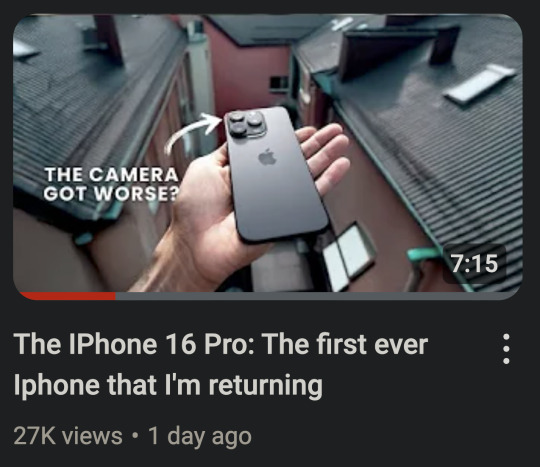

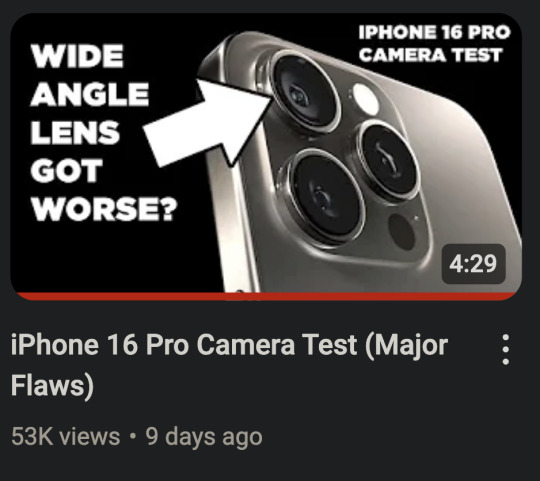
And I suppose this is partly Apple's fault. Their marketing and hype machine always goes overboard. But also, that's just how marketing works. Samsung has a "200 megapixel" sensor and Sony has a "Zeiss" lens. And I think it is unrealistic to expect smartphone companies to say "This product has entered the iterative phase and each new model will only be marginally improved over the last one."
Smartphones (from any brand) have become an appliance. You don't buy a new model of microwave every year. And you don't expect every new model of microwave to have new revolutionary technology. And that is pretty much the expectation you should have with most computer hardware from here on out.
And in some ways, that is a good thing. That means the design of the phone has pretty much been perfected and it will last you a long time if you take care of it. You will not be left behind and your phone will be able to handle any new software for most of its lifespan.
So, is Apple getting lazy or is there a reason their hardware is stagnating?
It seems that neither money nor marketing can change the laws of physics.
They cannot make transistors much smaller. Phones and computers are about as fast as current hardware designs can make them (unless there is a shocking scientific breakthrough). From here on out, heavy compute tasks that are beyond your phone or computer will be done in the cloud on giant computer clusters. Thankfully computers and phones seem to be plenty fast for the majority of tasks we ask of them.
I remember Katrina telling me her new computer didn't seem any faster. And I explained the computing tasks she does regularly were not really affected by the increased power and speed of her new computer. If something took 0.1 seconds before and now it takes 0.05 seconds, that is twice as fast. An increase in speed that looks fantastic in advertisements. But it is hard for our brains to perceive. She just didn't do anything on her computer that took it long enough for her to notice. But having a faster and more powerful computer/phone will increase its lifespan and resale value, so it is still prudent to get the best things you can afford at time of purchase.
And I'm afraid smartphone cameras are hitting their own hardware limitations. They can't make the sensors much larger to get better depth of field and low light performance. And cramming in more megapixels doesn't actually add much more detail, if any.
It's physics.
Again.
You cannot get any more performance out of a small plastic lens. Why do you think pro photographers haul around 10 pound lenses still?
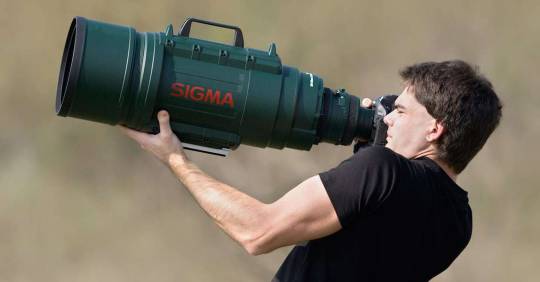
There is a formula for detail that never seems to be explained in any camera marketing.
Here is the simplified version...
Detail = Sensor x Lens
Let's say 1 is perfection. You have a sensor that performs at 0.5 and a lens that performs at 0.2.
The total detail will be 0.1.
But in the new model you increase the performance of the sensor to 0.8. WOW! That's so close to 1!
The total detail will be... 0.16.
Now let's imagine we've discovered a magic, physics-defying tiny plastic lens that performs at 0.8 as well.
The total detail jumps to 0.64!
But we all get sucked into a wormhole because we violated the laws of the universe.
Even if you were to design a near perfect (perfect is impossible) sensor that scores 0.99.
Without that magic plastic lens... 0.198
This is why I put Samsung's "200 megapixel" sensors in quotes. Because when paired with the same tiny plastic lens, there isn't much improvement. And that's why a 12 megapixel DSLR from 10 years ago with a giant honking lens can still capture more detail.
Most of the quality from smartphone cameras comes from the computational software processing. Phones actually take many photos at once and combine them to get you a decent image.

While that is still improving a little bit each generation, those improvements are stagnating as well. Until image processing can do a better job of inventing more detail realistically, smartphones are going to have to obey the laws of physics.
So... why are photographers saying the iPhone cameras are worse?
First, the ultra wide angle lens looks softer in low light.
And if you zoom between 1x and 5x, the images look less detailed.
But neither of those things make the cameras *worse*. In fact, the cameras are better for the most part. It's just that Apple decided to compromise on one aspect to improve another. Probably due to market research telling them most people prioritize certain things over others when taking photos.
They increased the resolution of the ultra wide angle sensor to match the detail of the main sensor, but that seems to have lowered the low light performance of the ultra wide. So in good light, you will see an improvement in sharpness. But they could not increase the sensor size to compensate and smaller pixels can have trouble with dim conditions. They probably discovered that people mostly use that lens in good light and they would appreciate the bump in detail more.
But pro photographers often photograph in more challenging lighting conditions because you can capture a more artistic shot. I don't think I could have gotten this shot on a smartphone.
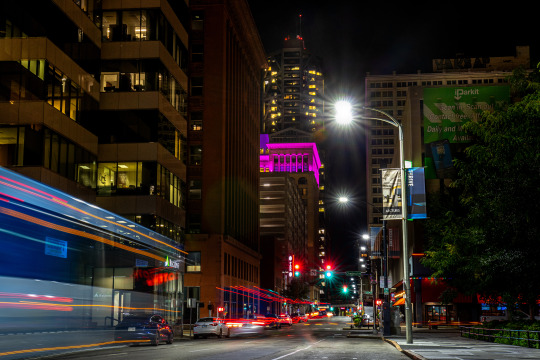
But photo normies are just taking pics of their kids doing weird kid shit.
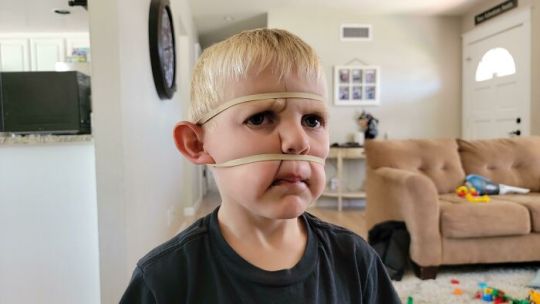
They aren't really trying to push the limits of their ultra wide angle lenses.
And they increased the zoom of the telephoto lens to 5x from 3x because most people never used the 3x. So images at 5x look great now, but unfortunately if you use anything between 1x and 5x, your image will be *digitally* zoomed. Which is never as good as optical zoom. They basically crop the photo, zoom in, and add sharpening.
So they prioritized people having longer reach and more zoom at the expense of that middle zoom range. Every camera system makes tradeoffs and compromises.
And I hate that I always feel like I am defending Apple, because they do have misleading and dishonest marketing regarding a lot of aspects of their tech. But hating on Apple gets more clicks so content creators also make misleading and dishonest claims.
And so we are just surrounded in a circle of hyperbole from all sides.
Now, if you know these limitations, you can change your approach to photographing stuff to keep them from being an issue. You can reap the benefits without dealing with the new compromises.
Here are some tips to help owners of the new iPhone, but also everyone else too.
Smartphone Photography Tips
Whenever possible, try to use the main 1x camera at only 1x zoom. This has the largest sensor with the most detail and works best in the lowest light. Only use the ultra wide or telephoto if you cannot get the photo otherwise. If you aren't sure you have enough light for ultra wide, take the photo, and then as a safety, take two photos with the main camera side by side and stitch them later with a pano app.
"Zoom with your feet" and don't use "in-between" zooms. Let's say your lenses do 0.5x, 1x, and 5x zoom. Even though you have the option to use other zooms, like 2x or 3x, that is going to compromise your picture quality. It is essentially going to crop your photo and enlarge it, which causes a loss of detail. If fact, if you use 4.5x instead of 5x, your picture will probably look like trash. You are always going to get better results if you can move closer or step back so that you are using the native focal length of your chosen lens. For example, let's say you are taking a photo and you judge the best framing to be at 4x. But you still have 10 feet of space behind you. If you back up and then zoom in to 5x, the phone will switch to that lens and you will get a much clearer picture.
Rule of thumb...
1 to 3x... try to move closer.
4 to 5x... try to move back.
If you hit a wall and end up at 4.5x, you might see if you have a panorama mode and try that instead. Switch to your 5x and do the pano. Or you can take two photos and then stitch them together with software later on. (Stitching panos with an app later will give better quality than pano mode, especially in low light.)
Low light needs stability. Get some sort of stabilizing device for low light photos. Either a phone case that lets you stand up the phone on its own or a mini tripod.
This thing folds to the size of a credit card.
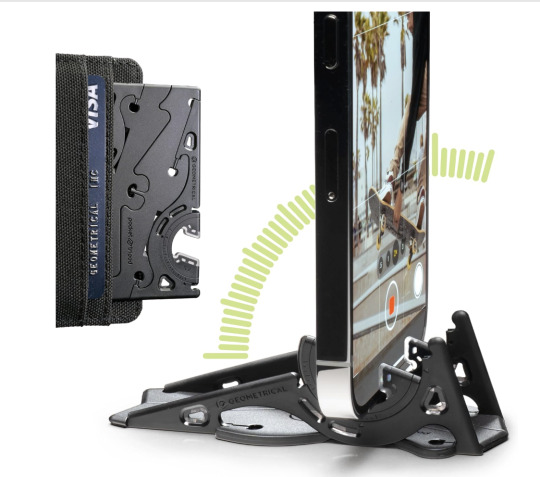
Your phone will detect when it is stable and not being handheld. It will then automatically extend its shutter speed allowing it to drink in more light and give you a better picture.
Tripods are photography magic and will improve your low light photos quite a bit. Motion blur of moving subjects can still be an issue, but photos of a cityscape or landscape will look great.
For selfies, shoot a little bit wide and then crop in. This goes a little contrary to my earlier advice saying cropping lowers detail, but this is specifically for shooting a face. The 0.5x and 1x lenses on smartphone cameras are fairly wide angle. This can cause unflattering proportions with human faces. Wide angle lenses exaggerate distance. Near things look very near and far things look very far. To a wide angle lens, the tip of your nose looks like it is super close but your ears seem like they are a mile away. And that's why you may look a bit "alien" in your selfies.
People's natural instinct is to "fill the frame" with a face. The outer edges of a wide angle lens are more distorted than the very center. So try to keep faces away from the edges of the frame.
And one other trick you can do for selfies and pictures of faces is step back a few feet. Sometimes this is hard, especially with selfies, as your arm is only so long... but if you can take your face photos from just a little bit farther back, you will almost entirely eliminate unflattering distortion. In some cases, just stretching out your arm as far as it will go is enough.
Then you just crop the image with the framing you originally wanted, and your facial proportions will look great.
An example...
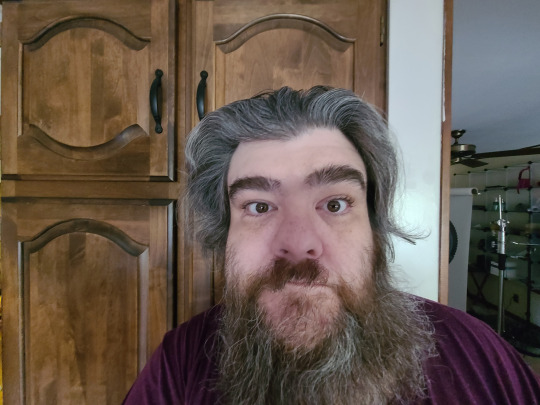
Here the distortion is bad because I am not in the center and the lens is too close to my face. The lens thinks my nose is really close and my ears are in Canada.
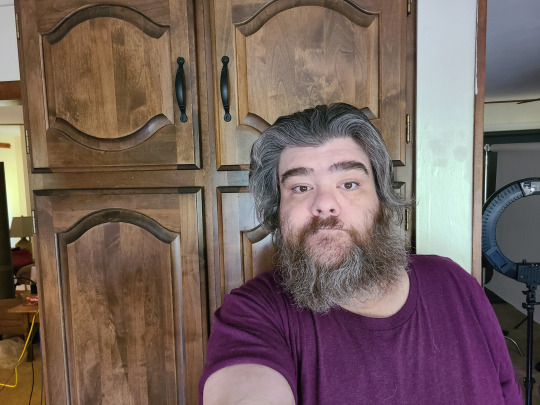
But when the lens is farther back the edge distortion is less prevalent and my nose and ears (relative to the lens) seem roughly the same distance away. So my proportions look great, but I don't quite have the framing I want.
But with a little cropping...


For social media there is still plenty of resolution to crop in. Cropping isn't bad, it's just always better to use it as a last resort or in a special circumstance like this. I get roughly the same framing as in my wide angle shot, but I don't look like I'm behind a door's peephole trying to sell you the Good News.
I wish they made a "mini" selfie stick that only extended a foot or so. With the main camera that is usually all people need to undo any wide angle issues. I have one of those mini tripods and that works well, but there is no activation button so I have to do a timer. Mirrors work great to help you get some selfie distance.
In any case, all cameras have limitations and compromises. Clickbait titles saying something is WORSE THAN THE OLD ONE are frustrating and wrong.
And people upgrading phones every year are silly. All current name brand smartphones have promised at least 5 years of software updates. I think Google and Samsung are offering 7 years on some models. And Apple has always just let you use your phone until it literally will not work with new software. Which has worked out to 8 years in some cases (with a battery swap).
Phones are now appliances. For now, hardware will improve 10 to 15% from generation to generation until physics breaks. So if you want a 50% improvement, wait 5 years and you'll think your new phone is awesome. If you upgrade every year, it is going to be difficult to see the change.
I hope to be starting a little course on smartphone photography in the near future. All modern phones are capable of taking amazing pictures. And as long as you understand their limitations you can mitigate or avoid them. And that is what I plan to teach.
#photography#bound by physics is right#lens size and sensor size are inherently tied to real life physics and there is a hard limit on how small you can make them#even if you continued to miniaturize everything else#your sensors and lenses are capped and cannot physically get smaller without sacrificing image quality#anyway part of the art is to pull things off even with substandard (phone) cameras#commentary#i wouldn't do an iphone tho lol. joke phone. 😂#more people need to understand zoom on phone cameras. if you're pinching in to 'zoom' you're probably failing#most of those are digital zooms which are the equivalent of cropping and enlarging the original image#it's a fake zoom and frankly they shouldn't exist#the only zoom you want is an optical zoom. it's not a zoom if it's not optical
700 notes
·
View notes
Text

Buy Turbidity Sensor Red PCB Online
Get the Turbidity Sensor Red PCB online for precise water quality monitoring. Reliable, high-accuracy, and easy to use for industrial and lab applications.
0 notes
Text
Chemical Oxygen Demand Sensor & Analyzer | Wizse Nsor Inc.
Wizse Nsor Inc. specializes in providing state-of-the-art Chemical Oxygen Demand (COD) sensors and analyzers that offer accurate, real-time monitoring for water quality management. Our COD sensors are designed to efficiently measure the amount of oxygen required to break down organic pollutants in water, making them ideal for wastewater treatment, environmental monitoring, and industrial applications.
Our COD analyzers use advanced optical and electrochemical technologies to deliver precise and reliable results, ensuring compliance with environmental standards and regulatory requirements. Whether you're in the field of water treatment, industrial processing, or environmental research, our COD sensor solutions are built to meet the rigorous demands of various applications.

The high sensitivity and durability of our COD sensors make them perfect for continuous monitoring in challenging environments. With easy integration, low maintenance, and real-time data collection, Wizse Nsor Inc. ensures that users receive consistent, accurate measurements for better decision-making.
Wizsensor Inc. is committed to innovation and customer satisfaction. We combine cutting-edge sensor technology with industry expertise to provide reliable and efficient COD monitoring solutions. Choose Wizse Nsor Inc. for the best in chemical oxygen demand sensor technology.
Water Conductivity Meter: Essential Guide by WizSensor
Water Conductivity Meter: Ultimate Guide
Ammonium Sensor & Ammonia Nitrogen Sensor Guide
Understanding Chemical Oxygen Demand (COD) Sensors
#Ammonium sensor#Ammonia nitrogen sensor#Water quality ammonium sensor#chemical oxygen demand sensor#chemical oxygen demand analyzer#cod sensor#dissolve oxygen sensor#dissolved oxygen probe#portable dissolved oxygen meter#optical dissolved oxygen sensor#do sensor
0 notes
Text
Why Regular Camera Sensor Cleaning and Pixel Mapping Are Essential
As a professional photographer and videographer based in Johannesburg, South Africa, maintaining your camera's sensor is just as important as mastering composition and lighting. Regular sensor cleaning and pixel mapping ensure every shot is free from unwanted artifacts, delivering the best possible image quality for your clients. This is one of the reasons I shoot with the Nikon system. Nikon has a free, professional camera sensor cleaning service so that you don’t accidentally damage your sensitive camera sensor.
The Importance of Sensor Cleaning
Your camera's sensor is the heart of image capture, and any dust or debris can lead to unwanted spots in your photos or videos. This is especially problematic for product photography, fashion photography, and corporate videography, where precision is key. Ever heard someone at a photoshoot say, "We'll fix it in post"? Well, Photoshopping elements you could have avoided will cost extra time and money (or even a good reputation) – especially if you’re on a tight deadline.
Why Regular Sensor Cleaning Matters:
Prevents Dust Spots: Tiny particles show up as dark spots, especially in skies or light backgrounds.
Improves Image Clarity: A clean sensor ensures sharper, more professional results.
Reduces Post-Processing Time: Fixing dust spots in editing is tedious and time-consuming.
Essential for High Resolution Shoots: Dust is more noticeable on high resolution cameras.
What is Pixel Mapping?
I only heard of this term a few years ago. Over time, camera sensors may develop stuck pixels, which appear as bright or dead spots. Pixel mapping is a process where the camera identifies and compensates for these faulty pixels, ensuring seamless, high quality images or footage.
Benefits of Pixel Mapping:
Removes Hot Pixels: Prevents bright or dead pixels from ruining perfect images.
Extends Sensor Lifespan: Helps maintain the integrity of your camera.
Ensures Uniform Image Quality: Ideal for food photography, hotel photography, and professional headshots.
Maintenance Schedule
Sensor Cleaning: Every few months, or whenever you notice spots.
Pixel Mapping: At least once a year, or if you start noticing stuck pixels.
Conclusion
Regular sensor cleaning and pixel mapping are essential for maintaining image quality. Whether you're shooting corporate videos, architectural photography, or high-end fashion photography, a clean and well-calibrated camera ensures your work remains professional and visually stunning. Need quality photography services? Give us a shout today!
#professional photographer#professional photography#camera sensor#sensor cleaning#dust spots#pixel mapping#stuck pixels#digital camera#hot pixels#image quality#photoshop#camera maintenance
0 notes
Video
youtube
IOT Based Smart Water Quality Sensor Monitoring System Using ESP32 | IoT-Enabled Advanced Water Quality Monitoring System for Pond Management and Environmental Conservation | Real-Time Water Quality Monitoring System | IoT Based Drinking Water Quality Monitoring with ESP32 | IoT Water Quality Monitoring with TDS Sensor
#youtube#IOT Based Smart Water Quality Sensor Monitoring System Using ESP32 | IoT-Enabled Advanced Water Quality Monitoring System for Pond Managemen#https://youtu.be/bTVjun1xg8I
0 notes